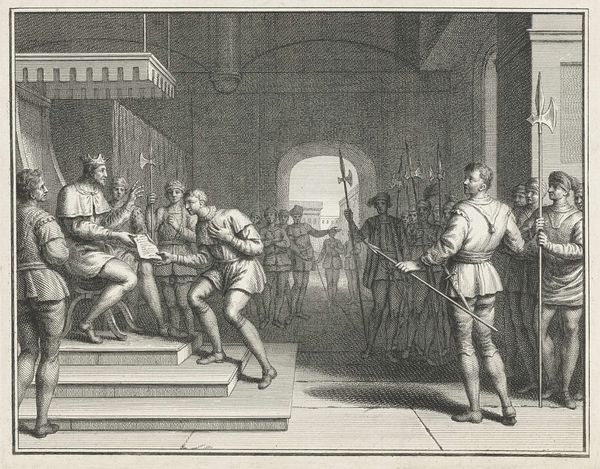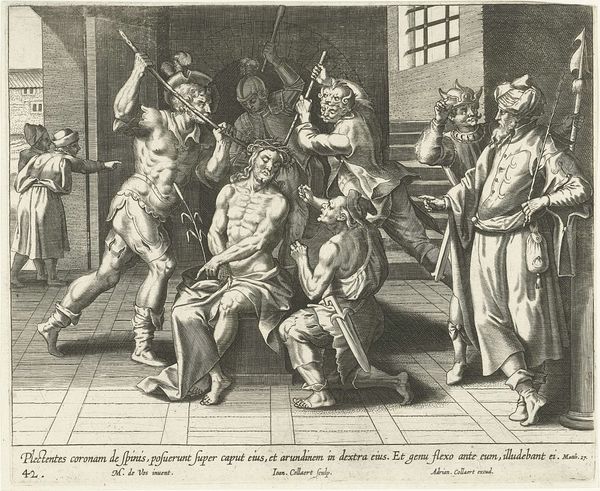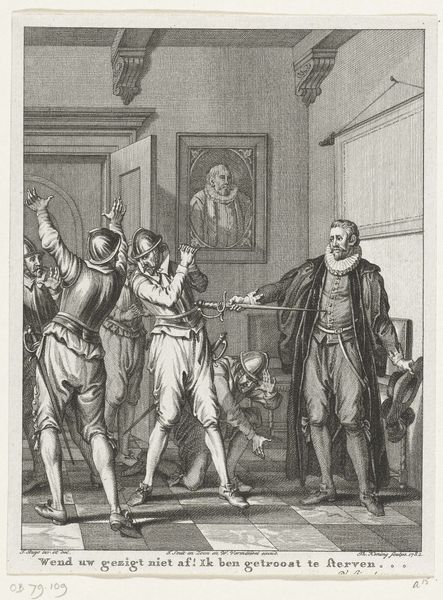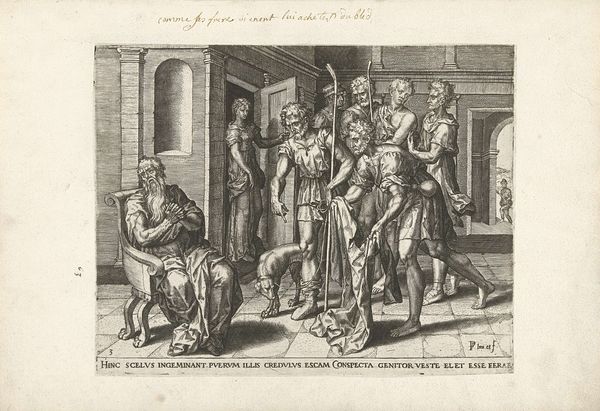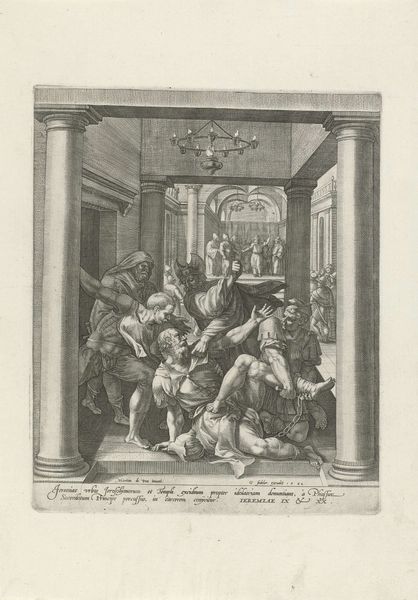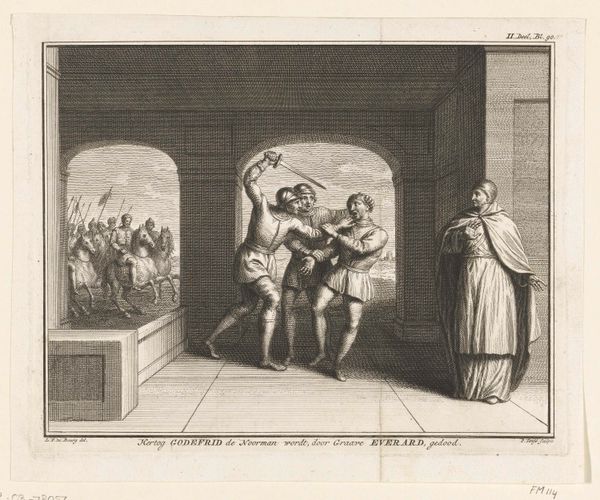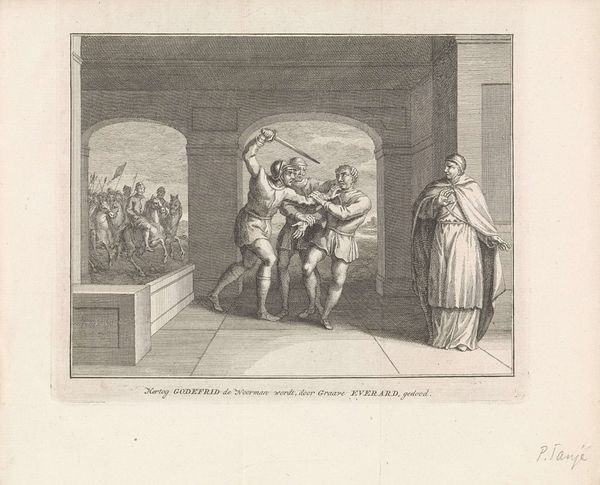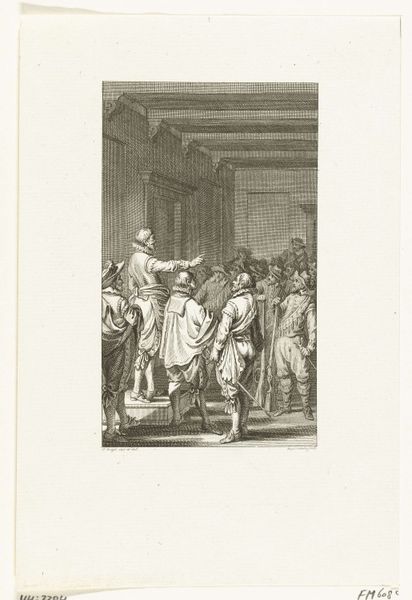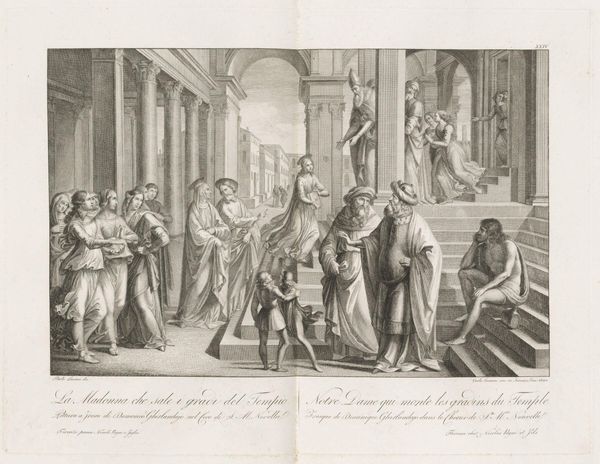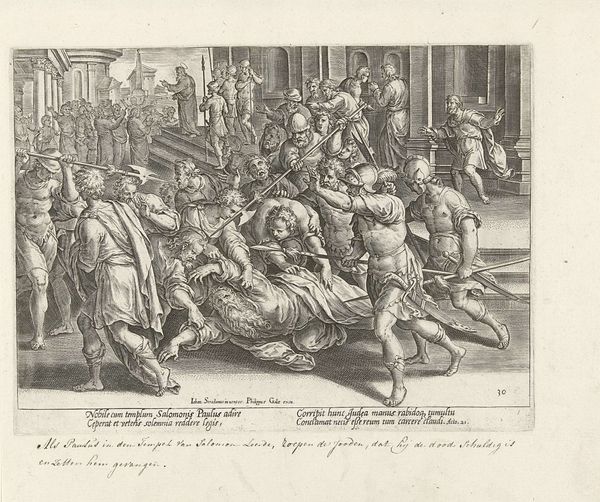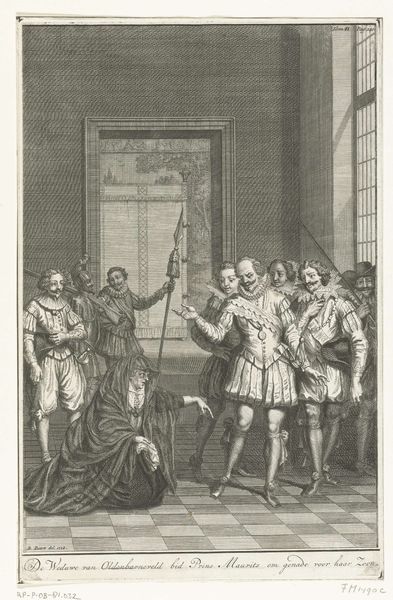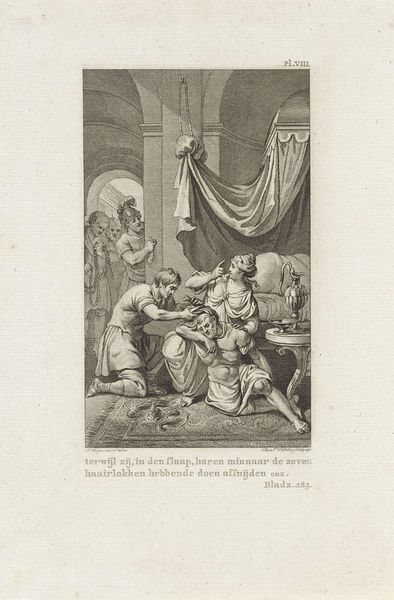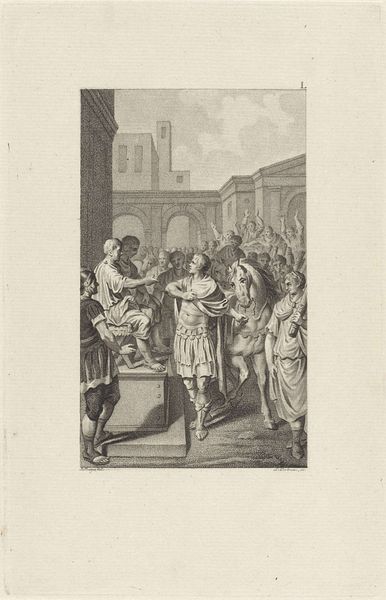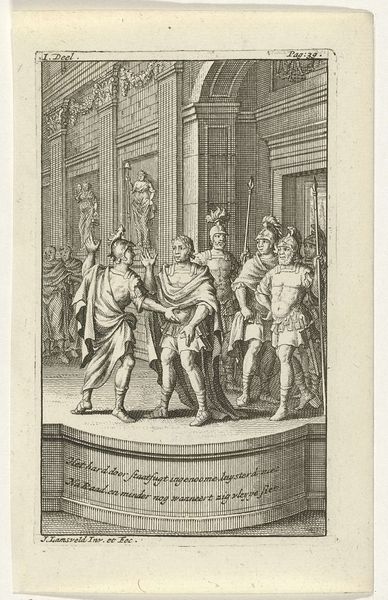
Karel de Eenvoudige verleent Dirk I de titel graaf van Holland, 922 1747 - 1749
0:00
0:00
print, engraving
#
narrative-art
#
baroque
# print
#
old engraving style
#
line
#
history-painting
#
engraving
Dimensions: height 146 mm, width 189 mm
Copyright: Rijks Museum: Open Domain
Curator: This print, housed here at the Rijksmuseum, depicts "Karel de Eenvoudige verleent Dirk I de titel graaf van Holland, 922," or Charles the Simple granting Dirk I the title of Count of Holland, 922. It was created by Pieter Tanjé between 1747 and 1749. Editor: The immediate impact is one of formality, but also a striking rigidity. Look at the linear quality of the engraving, how it constructs space, and the somewhat stiff figures, characteristic of the Baroque period. Curator: Indeed. Line engraving, with its emphasis on precise lines and tonal variation through density, shapes this vision of ninth-century political theater. There's a pronounced hierarchy in the composition. Editor: Certainly, we see the king enthroned above the supplicant, establishing a visible power dynamic. But consider what materials are valorized in this image and what labor went into its making? It is paper and ink memorializing a land grant! The print serves to disseminate and concretize this historic legitimization of power. Curator: And what's interesting is the implicit idea of “granting” a pre-existing condition. It depicts Charles 'confirming' rather than creating Dirk's title, acknowledging a local power. That points towards continuity. It implies that power originates somewhere, even when "granted" by a ruler. It brings forward questions of where power lies—on the seat, the document, or the people beyond the walls? Editor: Well, even this paper version of power relies on resources and a printmaker's meticulous, disciplined work! Tanjé's skill shapes how we perceive this power dynamic now, centuries later. His choice of medium affects its legacy. Curator: The engraving translates a moment of political ceremony into a portable, reproducible image. Think of how that amplifies the memory and symbolic weight of this transfer of power. The ritual becomes embedded in collective imagination. Editor: So even the art itself reinforces an idea—in this case, the lineage of power, constructed in material form. Curator: A legacy, pressed onto the very fibers of the paper, replicated to instill in its viewers. Editor: Exactly. History mediated through labor, skill, and, ultimately, consumption. It’s a material argument as much as a historical record.
Comments
No comments
Be the first to comment and join the conversation on the ultimate creative platform.
